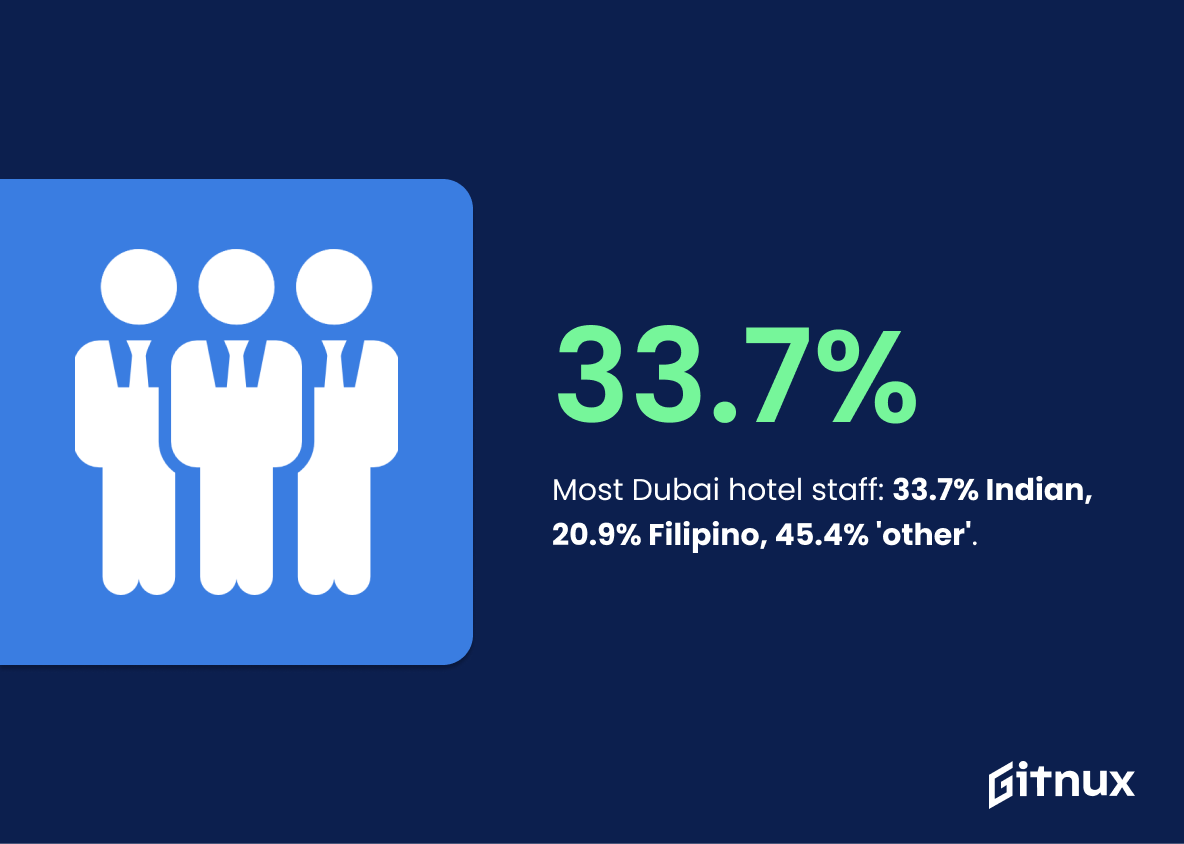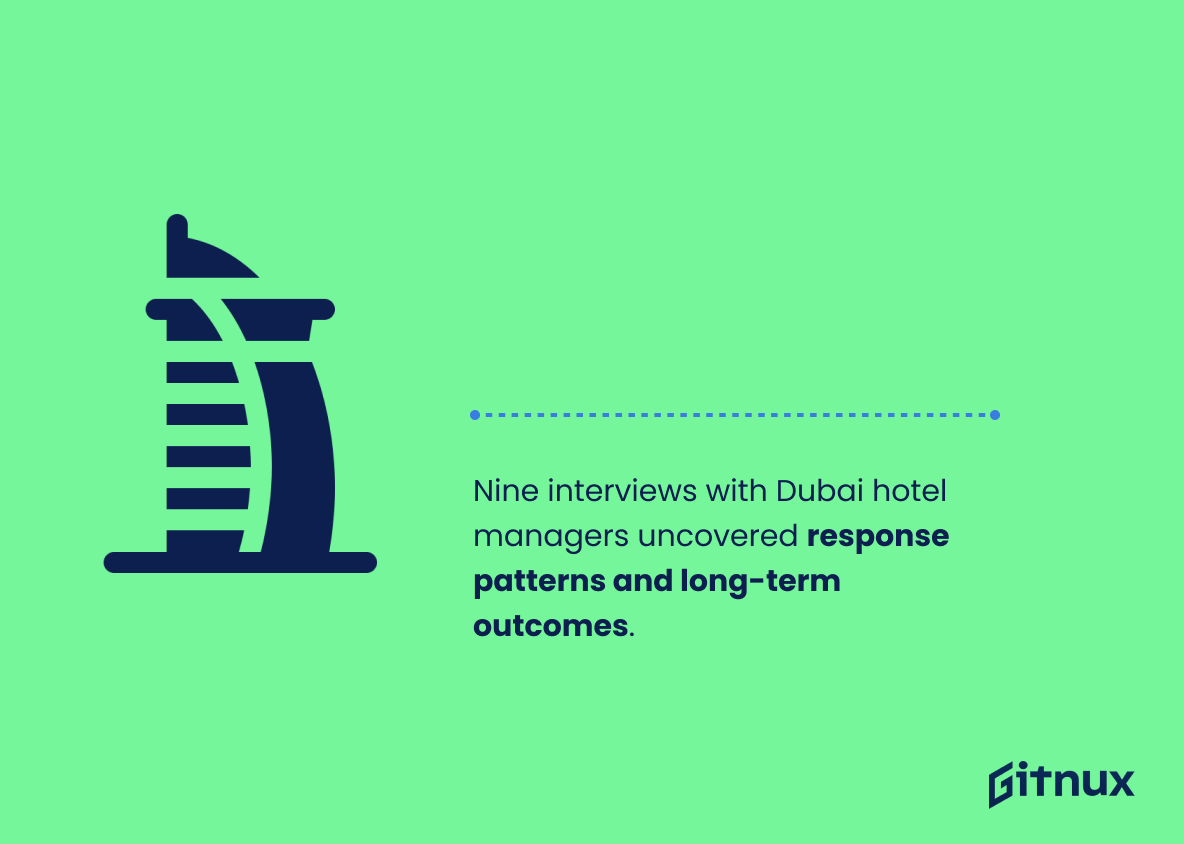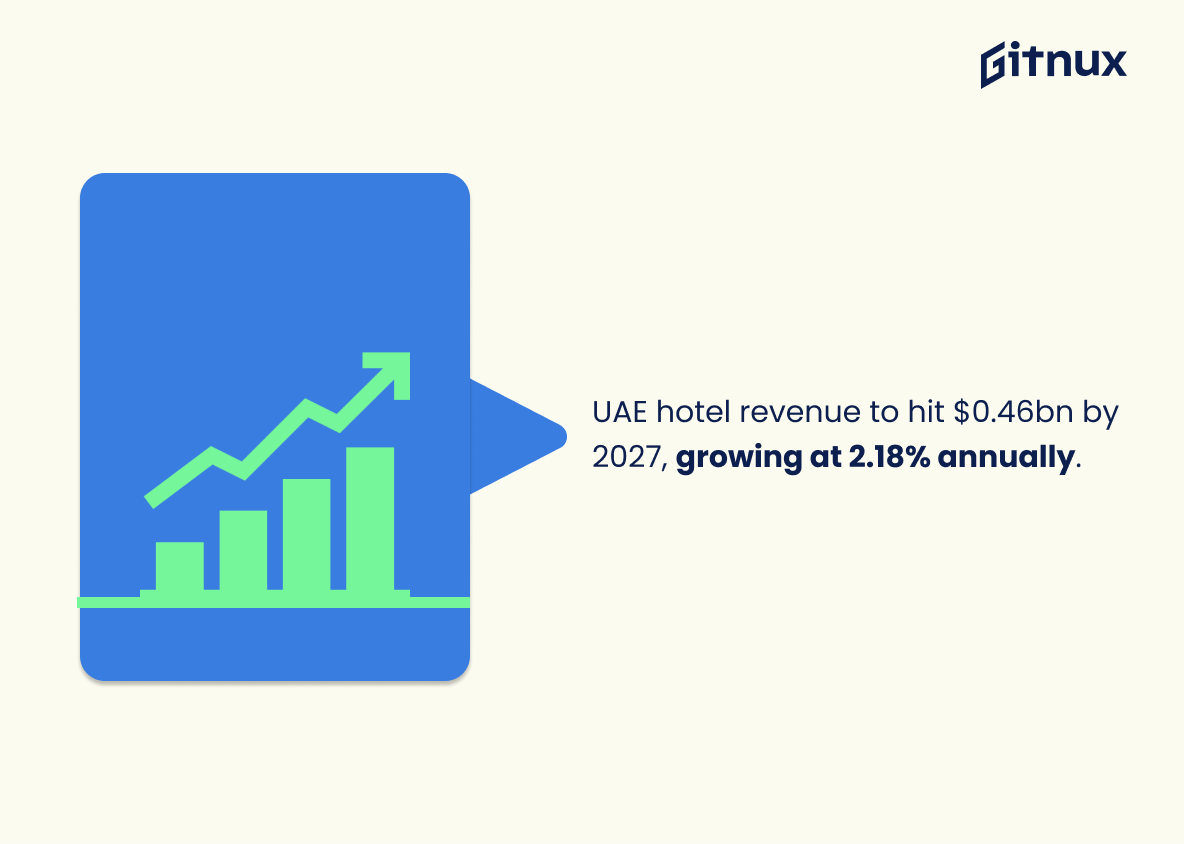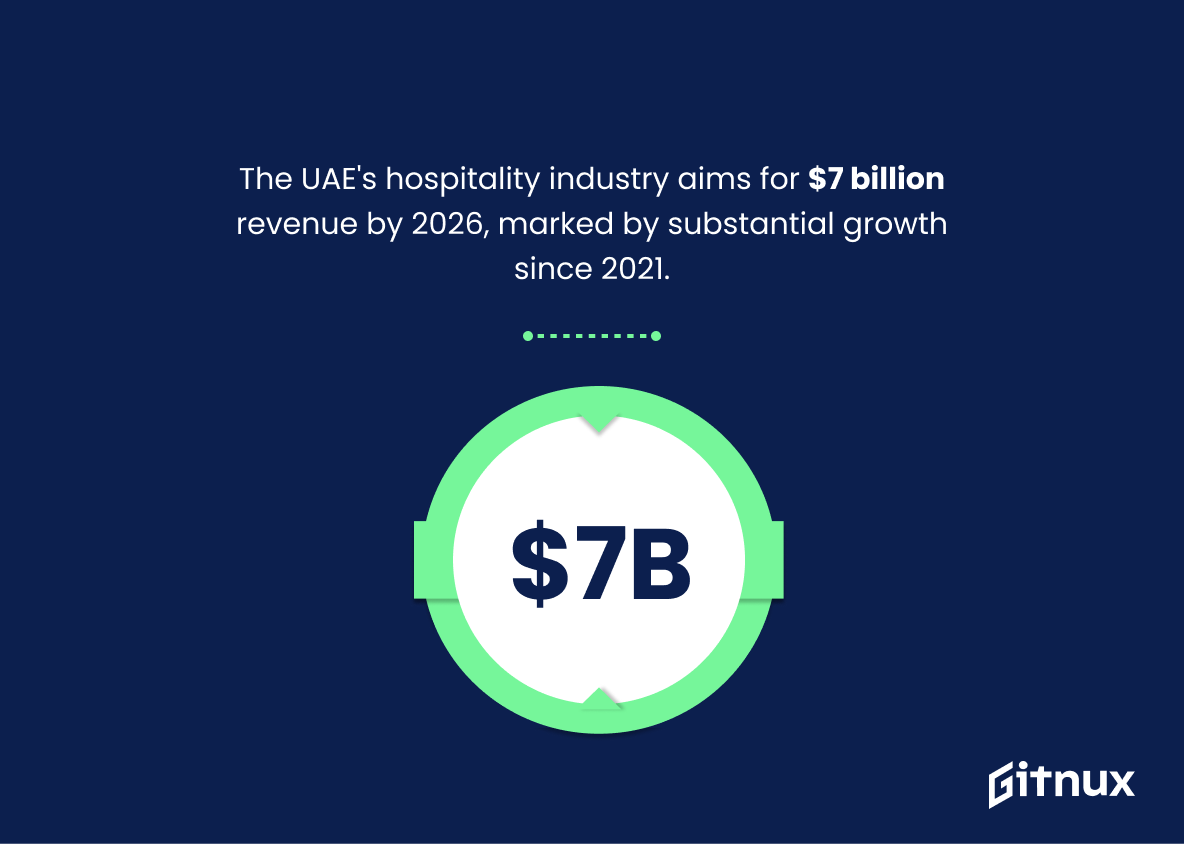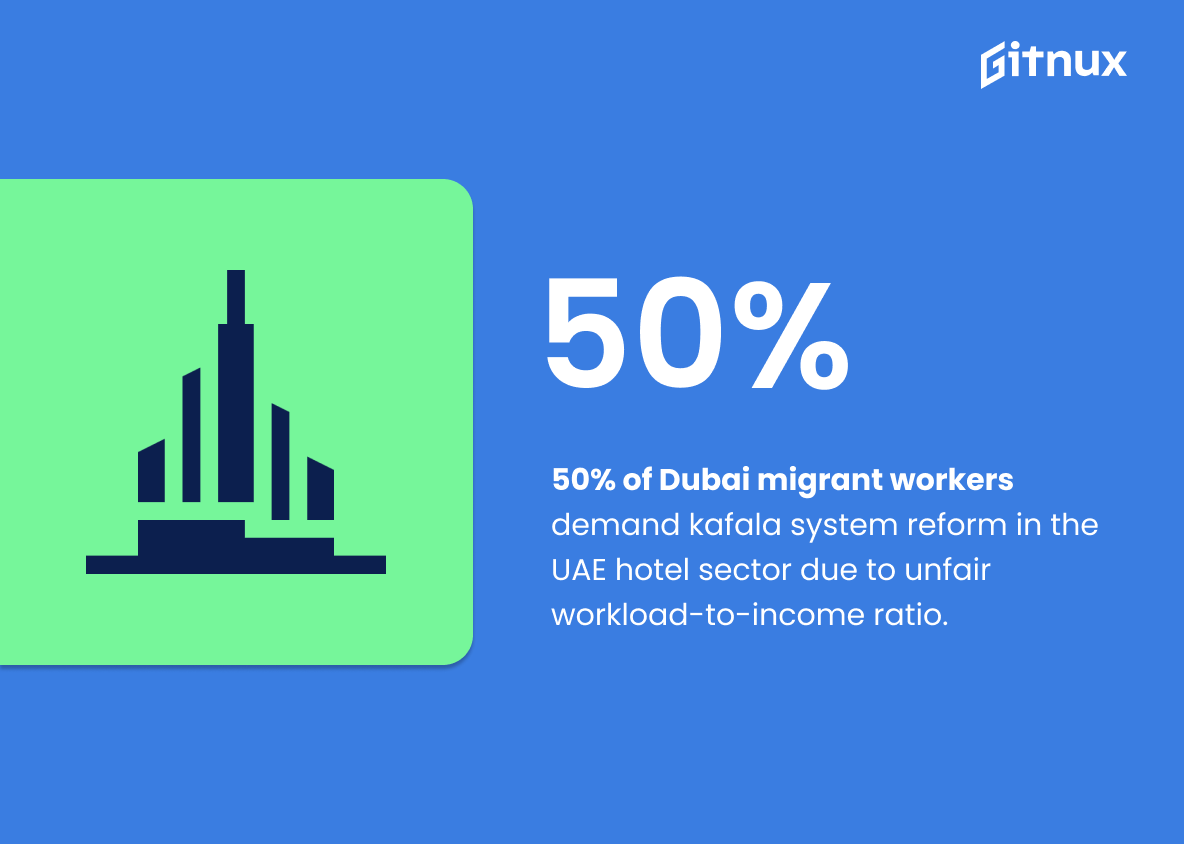The UAE hotel industry is one of the most dynamic and vibrant in the world. With its booming tourism industry, the UAE has seen a steady rise in the number of hotels and resorts in the country. From luxury resorts to budget hotels, the UAE has something for everyone.
In this blog post, we will take a look at the UAE hotel industry statistics and explore the trends that are shaping the industry. We will also discuss the challenges and opportunities that the industry is facing and how it is adapting to the changing landscape. Finally, we will examine the potential for growth in the industry and how it can benefit the UAE economy.
UAE Hotel Industry: The Most Important Statistics
Hotel revenue in the UAE is projected to reach US$0.46bn by 2027, with an annual growth rate of 2.18%.
66% of male and 27% of female migrant workers reported unpaid sick leaves, while only 5% of men and 0% of women reported appreciation and respect from employers.
UAE Hotel Industry Statistics Overview
The majority of Dubai hotel employees are born in India (33.7%), followed by Filipino (20.9%), and 45.4% in the ‘other’ category.
This shows the diversity of the workforce and the need for hotel management to understand the cultural differences of their employees in order to effectively manage them.
Migrant workers make up the majority of employment in the UAE’s tourism industry, which is important for the hotel industry.
Thus, there is a need for the UAE to ensure that migrant workers are treated fairly and given the rights and protections they are entitled to.
Nine semi-structured interviews with senior hotel managers in Dubai revealed the pattern of response and long-term consequences of such responses.
The UAE hotel industry saw a severe decline in 2020, with ADR decreasing by 20.4%, RevPAR falling by 42.9%, and occupancy dropping by 28.2% compared to the same point in time in 2019.
This highlights the impact of the COVID-19 pandemic on the UAE’s tourism and hospitality industry, and the need for effective recovery strategies to ensure the safety of tourists and the sustainability of the industry.
Hotel revenue in the UAE is projected to reach US$0.46bn by 2027, with an annual growth rate of 2.18%.
On this, we can see the potential growth of the industry over the next few years.
The hospitality industry in the UAE is projected to generate over $7 billion in revenue by 2026, with a significant increase from 2021 to 2026.
Dubai Hotel OSC score is 3.7230 out of 5, suggesting that hotel employees are generally happy with their work.
This suggests that hotel employees are generally satisfied with their work environment, which is essential for customer satisfaction and loyalty.
50% of migrant workers interviewed in Dubai consider their workload too heavy for the income it brings, highlighting the need for reform of the kafala system to ensure better working conditions in the UAE hotel industry.
76.6% of employees in the Dubai hotel industry are male, which indicates a potential gender imbalance in the industry, which could lead to unequal opportunities and pay for female employees. This could have a negative impact on the industry, as it could lead to a lack of diversity and inclusion in the workplace.
66% of male and 27% of female migrant workers reported unpaid sick leaves, while only 5% of men and 0% of women reported appreciation and respect from employers.
This shows that there is a lack of respect and appreciation for migrant workers in the hospitality sector, which can lead to lower morale and productivity among employees. This can have a negative impact on the industry, as it can lead to higher turnover rates and lower customer satisfaction.
Conclusion
The UAE hotel industry is a vibrant and growing sector that is set to continue to grow in the coming years. With the increasing number of tourists and business travelers visiting the country, the demand for hotel accommodation is expected to remain strong.
The UAE government is also taking steps to ensure that the industry remains competitive and attractive to both domestic and international travelers. With the right strategies in place, the UAE hotel industry is poised to become one of the most successful in the world.
References
1 – https://www.researchgate.net/publication/330345970_Human_capital_in_the_Dubai_hotel_industry_A_study_of_four-_and_five-star_hotels_and_the_HR_challenges_they_face
2 – https://www.ilo.org/wcmsp5/groups/public/—ed_protect/—protrav/—migrant/documents/publication/wcms_179259.pdf
3 – https://journals.sagepub.com/doi/pdf/10.1177/14673584211034525
4 – https://archives.palarch.nl/index.php/jae/article/download/8537/7956/16730
5 – https://www.statista.com/outlook/mmo/travel-tourism/hotels/united-arab-emirates
6 – https://www.statista.com/statistics/1332617/uae-revenue-of-hospitality-industry/
7 – https://cadmus.eui.eu/bitstream/handle/1814/65986/Report_GLMM02.pdf
